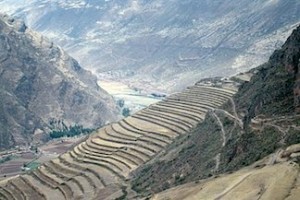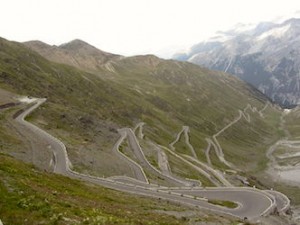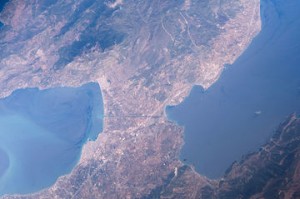I gave simple machines a basic overview in my last blog. This time, I’m going to go more in-depth into the history of simple machines—specifically concerning ramps.
 The ancient Greeks recognized three simple machines to start with: the lever, the screw, and the pulley. The man who came up with the idea, Archimedes, was a brilliant but crazy guy. Built crazy ancient super weapons to sink entire enemy fleets one day, then jury rigged an ancient precursor to calculus the next. He’s considered one of the greatest mathematicians of all time for a good reason. He’s the kind of dude who could have moved the world, if you gave him a long-enough lever.
The ancient Greeks recognized three simple machines to start with: the lever, the screw, and the pulley. The man who came up with the idea, Archimedes, was a brilliant but crazy guy. Built crazy ancient super weapons to sink entire enemy fleets one day, then jury rigged an ancient precursor to calculus the next. He’s considered one of the greatest mathematicians of all time for a good reason. He’s the kind of dude who could have moved the world, if you gave him a long-enough lever.
The Greeks added two additional simple machines eventually, but they were still lacking the ramp somehow. (They didn’t know what they were missing out on.)
It actually wasn’t until after a millennia and a half after Archimedes that the inclined plane was finally included in the list. The fellow who did it? An eccentric but brilliant Dutchman named Simon Steven (an unfortunately boring name for a genius.) Simon Steven was another one of those nutty Renaissance-era polymaths who threw the curve for everyone else. Simon Steven was the first person to figure out the mechanical advantage of the inclined plane. He also invented a wind-powered land yacht that could outrace horses.
 After Simon Steven completed the simple machine sextet, of course, the development of the science behind simple machines hardly stopped. Galileo Galilei, notably, was the first to figure out that they didn’t create energy but merely transformed it. Leonardo da Vinci also made some critical discoveries regarding calculating friction in simple machines; then he promptly left them unpublished in his notebooks. It took almost two hundred years for someone else to independently rediscover them.
After Simon Steven completed the simple machine sextet, of course, the development of the science behind simple machines hardly stopped. Galileo Galilei, notably, was the first to figure out that they didn’t create energy but merely transformed it. Leonardo da Vinci also made some critical discoveries regarding calculating friction in simple machines; then he promptly left them unpublished in his notebooks. It took almost two hundred years for someone else to independently rediscover them.
 A simple machine is a device used to change the direction or power of a force applied to something in the simplest manner possible. There are six devices classically categorized as simple machines: axles and wheels, levers, pulleys, screws, wedges, and inclined planes (obviously the best).
A simple machine is a device used to change the direction or power of a force applied to something in the simplest manner possible. There are six devices classically categorized as simple machines: axles and wheels, levers, pulleys, screws, wedges, and inclined planes (obviously the best). At first glance, our final classical simple machine, the lever, is pretty distinct from the others. A guy named Franz Reuleaux, however, realized that, like the wheel and pulley, the lever is just a body rotating about a hinge. Reuleaux was also the one who figured out that the screw, wedge, and inclined plane were the same. Really smart cookie.
At first glance, our final classical simple machine, the lever, is pretty distinct from the others. A guy named Franz Reuleaux, however, realized that, like the wheel and pulley, the lever is just a body rotating about a hinge. Reuleaux was also the one who figured out that the screw, wedge, and inclined plane were the same. Really smart cookie. Terraces might be something of an opposite of ramps, but that just makes them more fascinating. Living among some of the steepest mountains in the world, the Incans had to improvise heavily when it came to all sorts of facets of their life. Their terraces did a lot more than provide flat areas for food production (though don’t get me wrong: that was just a little bit important); they also helped to control erosion and landslides.
Terraces might be something of an opposite of ramps, but that just makes them more fascinating. Living among some of the steepest mountains in the world, the Incans had to improvise heavily when it came to all sorts of facets of their life. Their terraces did a lot more than provide flat areas for food production (though don’t get me wrong: that was just a little bit important); they also helped to control erosion and landslides. The most famous are almost certainly the rice terraces of the Philippine Cordilleras: they’ve actually been declared a UNESCO heritage site. You’ve almost certainly seen images of them before. They’ve been farmed continuously for something like 2000 years, which is absolutely crazy. That’s not just architecture, it’s a way of life.
The most famous are almost certainly the rice terraces of the Philippine Cordilleras: they’ve actually been declared a UNESCO heritage site. You’ve almost certainly seen images of them before. They’ve been farmed continuously for something like 2000 years, which is absolutely crazy. That’s not just architecture, it’s a way of life. One of the craziest examples of the breed is the
One of the craziest examples of the breed is the  The Diolkos, built by the ancient Greeks, was half ramp, half causeway. It was used to transport ships across the Ithmus of Corinth, saving them a dangerous sea voyage. The ancient Greeks actually dragged the ships overland on it. (You’d think a canal would be easier to use, but canals are a lot harder to build and maintain.) Huge teams of men and oxen would have pulled the boats and cargo across it in about three hours per trip.
The Diolkos, built by the ancient Greeks, was half ramp, half causeway. It was used to transport ships across the Ithmus of Corinth, saving them a dangerous sea voyage. The ancient Greeks actually dragged the ships overland on it. (You’d think a canal would be easier to use, but canals are a lot harder to build and maintain.) Huge teams of men and oxen would have pulled the boats and cargo across it in about three hours per trip.